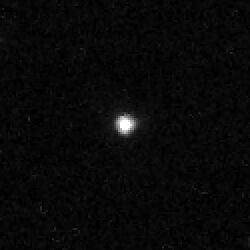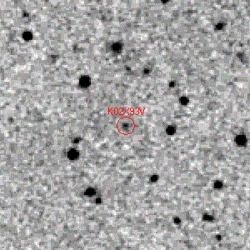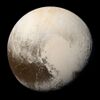Astronomy:2002 XV93
From HandWiki
 2002 XV93 imaged by the Hubble Space Telescope in 2005 | |
| Discovery[1] | |
|---|---|
| Discovered by | M. W. Buie |
| Discovery date | 10 December 2002 |
| Designations | |
| 2002 XV93 | |
| Minor planet category | plutino[2] |
| Orbital characteristics[4] | |
| Epoch 13 January 2016 (JD 2457400.5) | |
| Uncertainty parameter 3 | |
| Observation arc | 6582 days (18.02 yr) |
| Earliest precovery date | 16 October 1990 |
| |{{{apsis}}}|helion}} | 44.427 astronomical unit|AU (6.6462 Tm) (Q) |
| |{{{apsis}}}|helion}} | 34.405 AU (5.1469 Tm) (q) |
| 39.416 AU (5.8965 Tm) (a) | |
| Eccentricity | 0.12713 (e) |
| Orbital period | 247.47 yr (90387.1 d) |
| Mean anomaly | 282.08° (M) |
| Mean motion | 0° 0m 14.338s / day (n) |
| Inclination | 13.281° (i) |
| Longitude of ascending node | 19.170° (Ω) |
| |{{{apsis}}}|helion}} | ≈ 20 March 2070[3] ±5 days |
| 163.53° (ω) | |
| Earth MOID | 33.4096 AU (4.99801 Tm) |
| Jupiter MOID | 28.9574 AU (4.33197 Tm) |
| Physical characteristics | |
| Dimensions | 549.2+21.7 −23.0 km[5] |
| Geometric albedo | 0.040+0.020 −0.015[5] |
| |
| Apparent magnitude | 21.1[6] |
| Absolute magnitude (H) | |
2002 XV93, also written as 2002 XV93, is a trans-Neptunian object (TNO) with an absolute magnitude of 5.4.[5] A 2:3 orbital resonance with Neptune makes it a plutino.[2]
It has been observed with precovery images back to 1990.[4]
Orbit and rotation
2002 XV93 is locked in 2:3 resonance with Neptune, which means that when it makes two revolutions around the Sun, Neptune makes exactly three.[2]
The rotation period of this object is not known.
Physical characteristics
The size of 2002 XV93 has been measured by the Herschel Space Telescope to be 549.2+21.7
−23.0 km.[5]
References
- ↑ "List of Transneptunian Objects". IAU Minor Planet Center. http://www.minorplanetcenter.org/iau/lists/TNOs.html.
- ↑ 2.0 2.1 2.2 "MPEC 2010-O39 :Distant Minor Planets (12 August 2010.0 TT)". Minor Planet Center & Tamkin Foundation Computer Network. 27 July 2010. http://www.minorplanetcenter.org/mpec/K10/K10O39.html.
- ↑ JPL Horizons Observer Location: @sun (Perihelion occurs when deldot changes from negative to positive. Uncertainty in time of perihelion is 3-sigma.)
- ↑ 4.0 4.1 4.2 "JPL Small-Body Database Browser: 2002 XV93". http://ssd.jpl.nasa.gov/sbdb.cgi?sstr=2002XV93.
- ↑ 5.0 5.1 5.2 5.3 5.4 5.5 Mommert, Michael; Harris, A. W.; Kiss, C.; Pál, A.; Santos-Sanz, P.; Stansberry, J.; Delsanti, A.; Vilenius, E. et al. (May 2012). "TNOs are cool: A survey of the trans-Neptunian region—V. Physical characterization of 18 Plutinos using Herschel-PACS observations". Astronomy & Astrophysics 541: A93. doi:10.1051/0004-6361/201118562. Bibcode: 2012A&A...541A..93M.
- ↑ "AstDys 2002XV93 Ephemerides". Department of Mathematics, University of Pisa, Italy. https://newton.spacedys.com/astdys/index.php?pc=1.1.0&n=2002XV93.
- ↑ Tegler, Stephen C. (1 February 2007). "Kuiper Belt Object Magnitudes and Surface Colors". http://www.physics.nau.edu/~tegler/research/survey.htm.
- ↑ Lowe, Andrew. "2002 XV93 Precovery Images". http://andrew-lowe.ca/2002xv93.htm.
External links
- 2002 XV93 at AstDyS-2, Asteroids—Dynamic Site
- 2002 XV93 at ESA–space situational awareness
- 2002 XV93 at the JPL Small-Body Database




